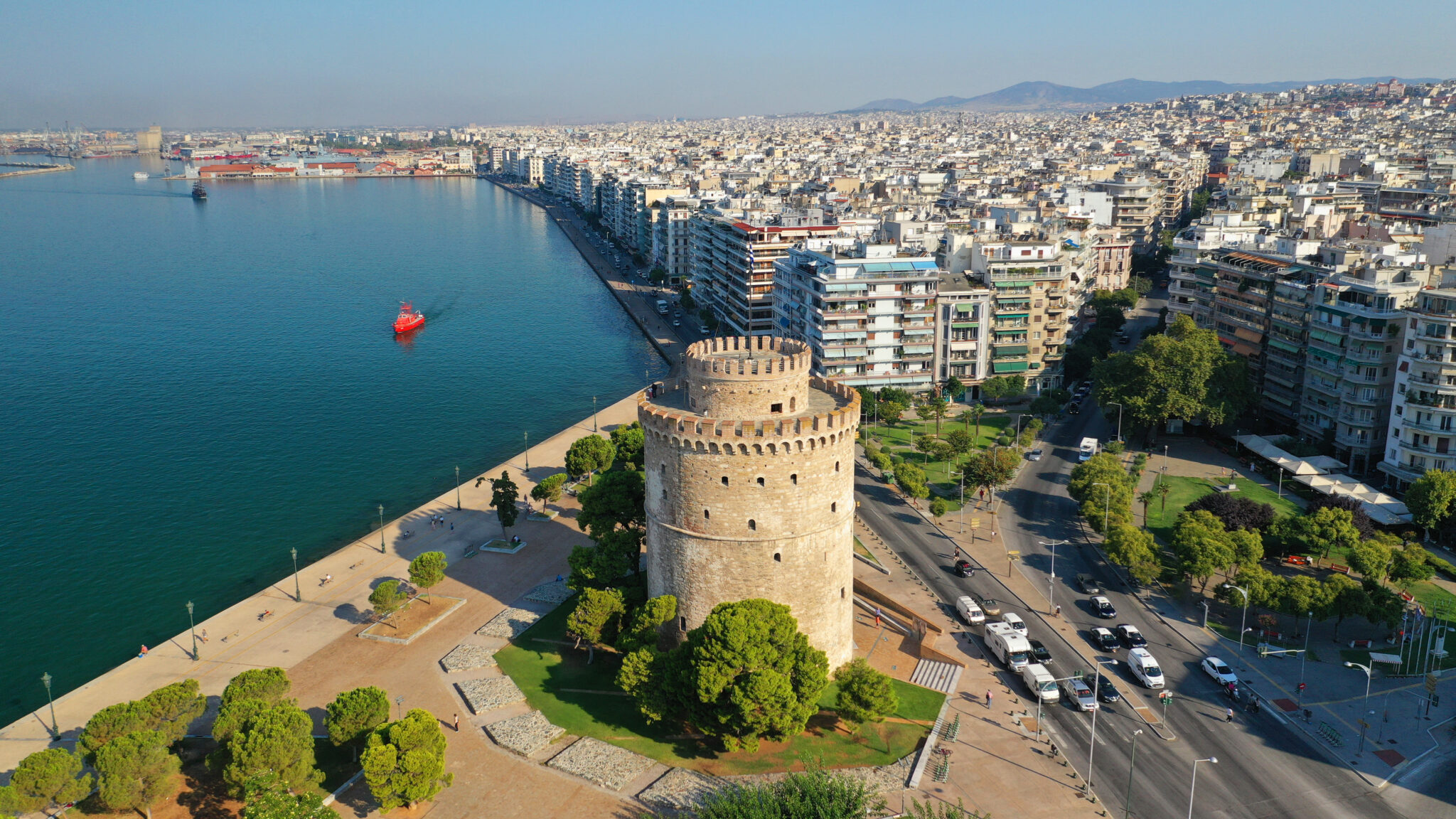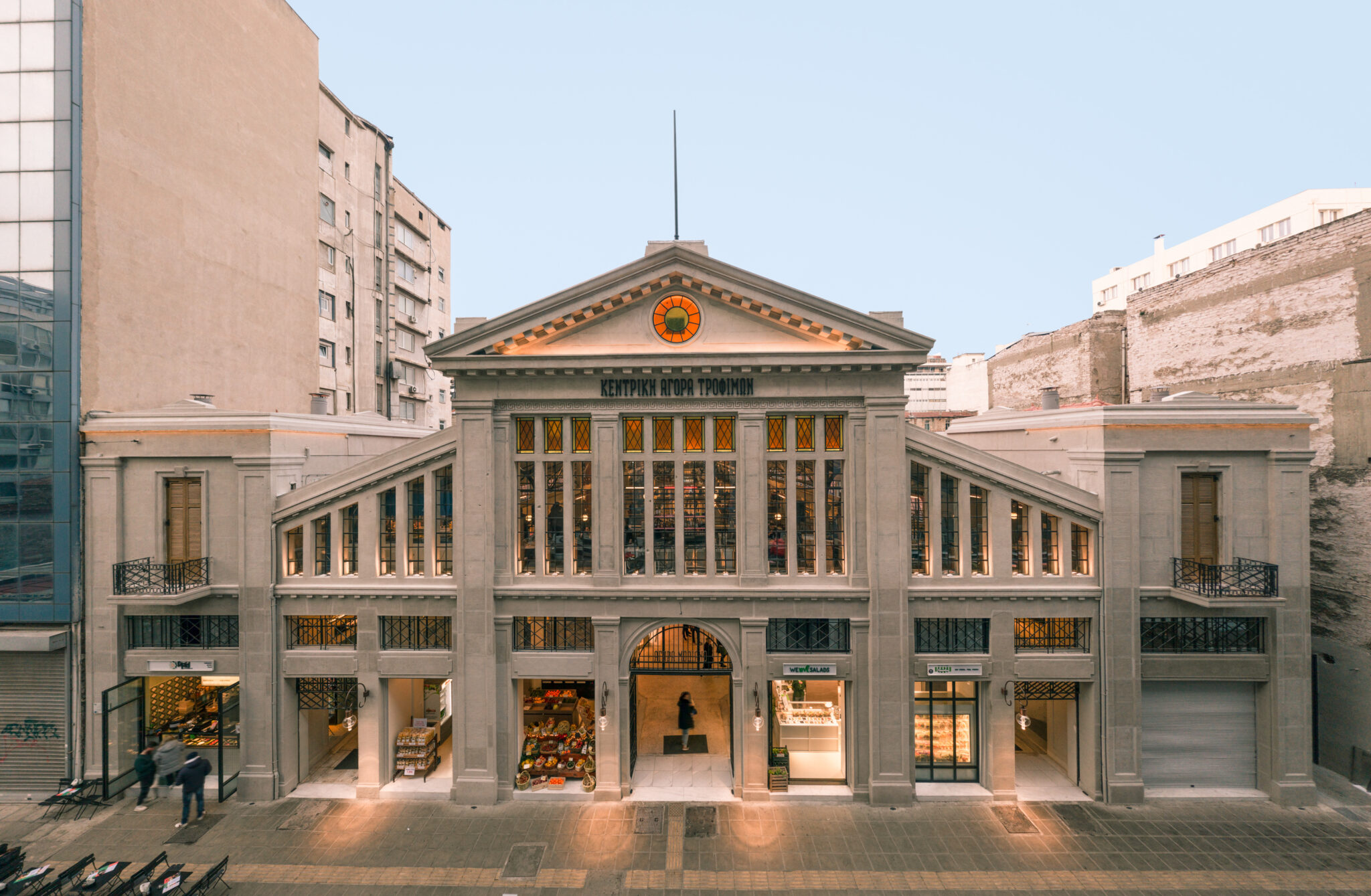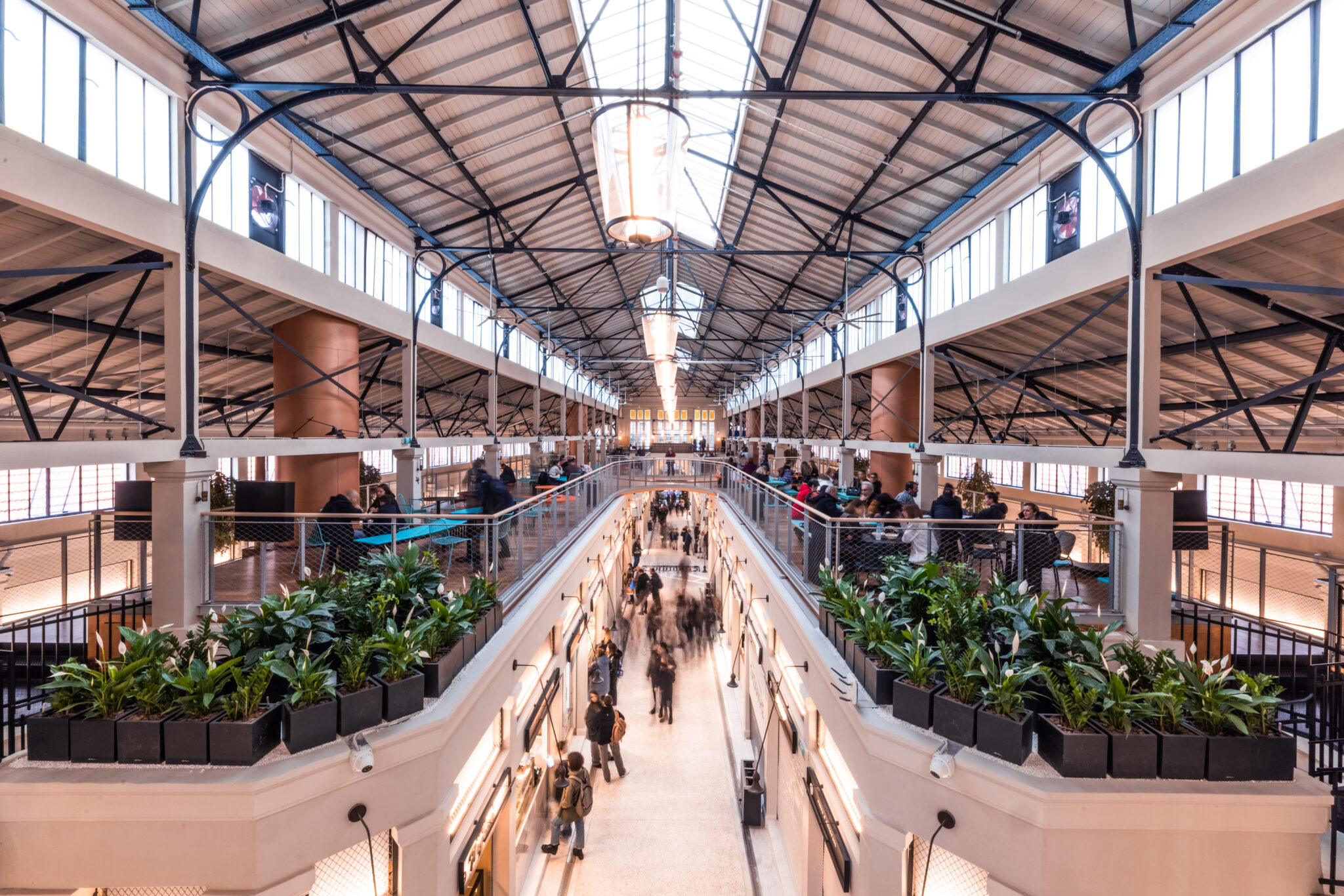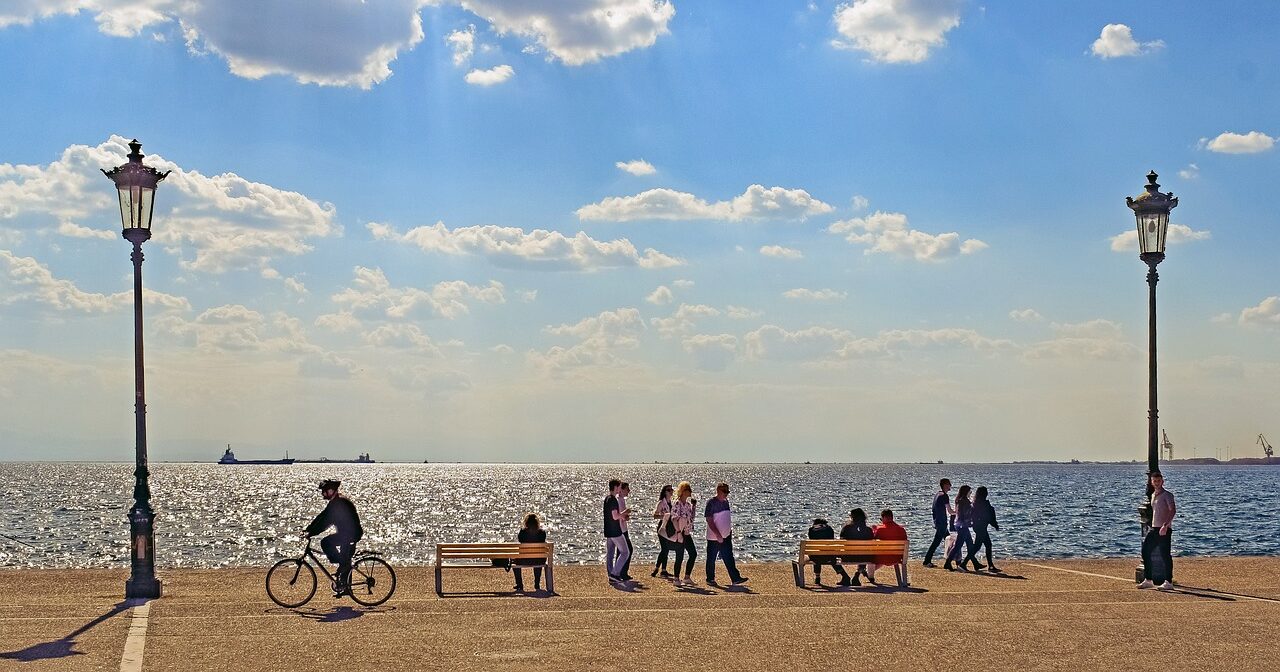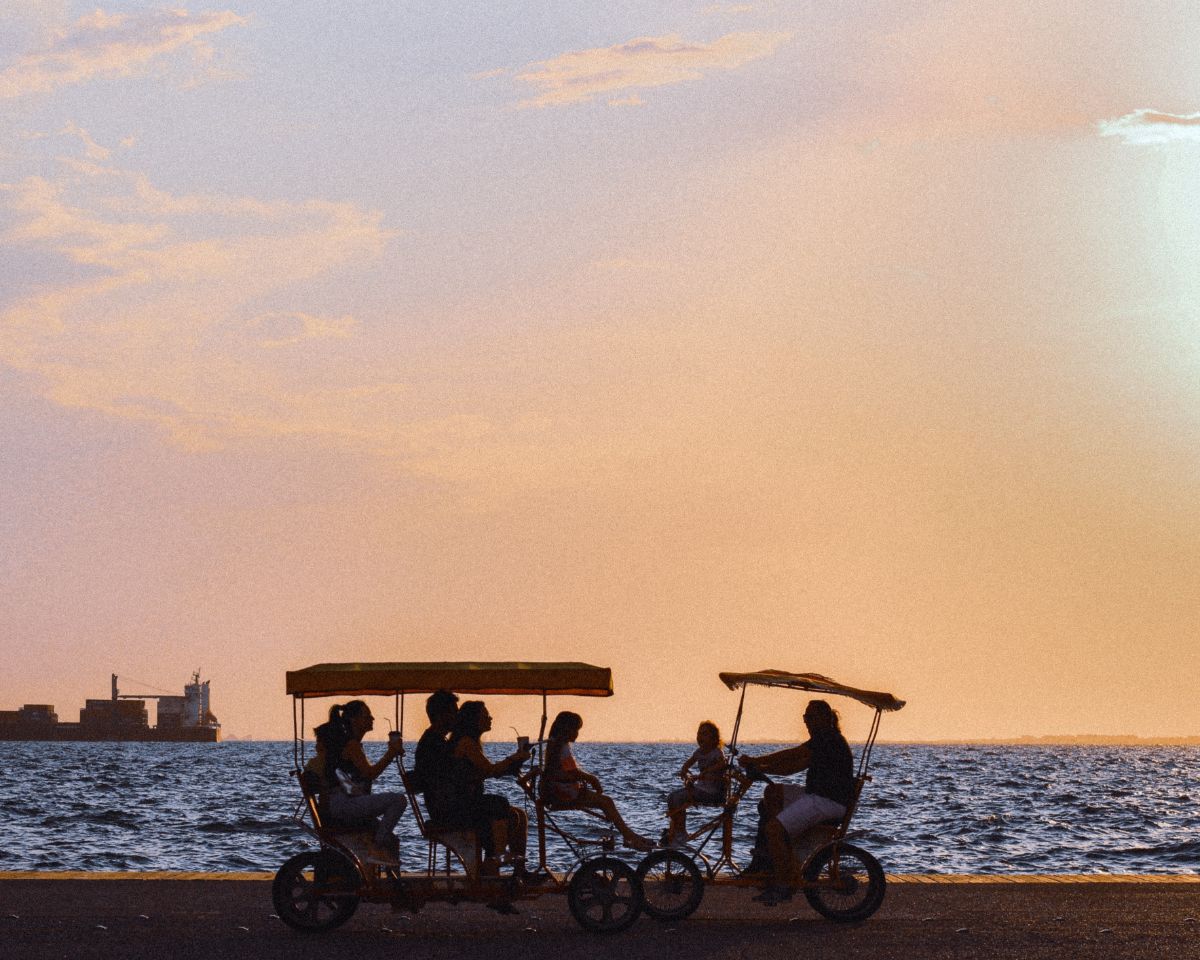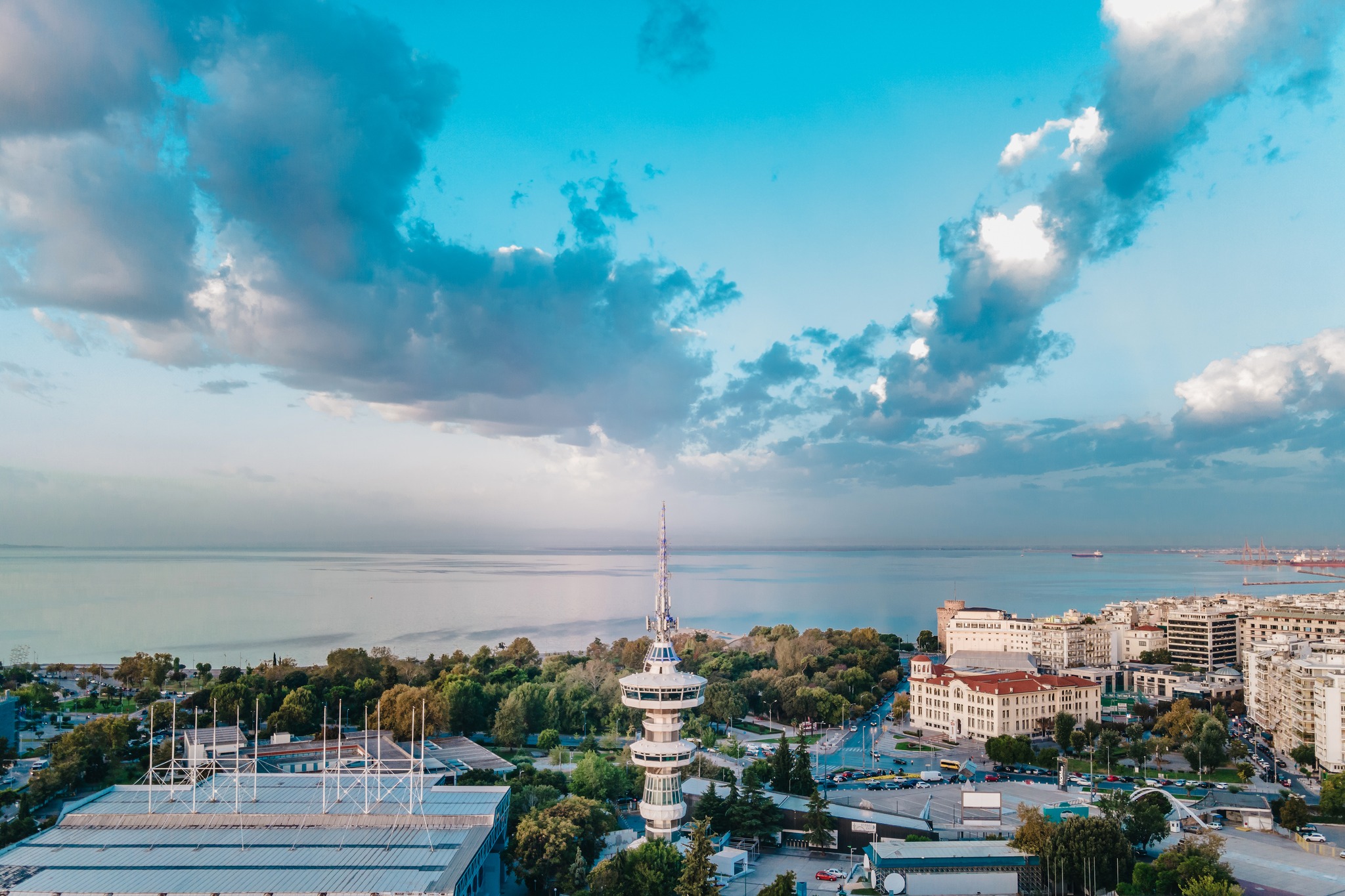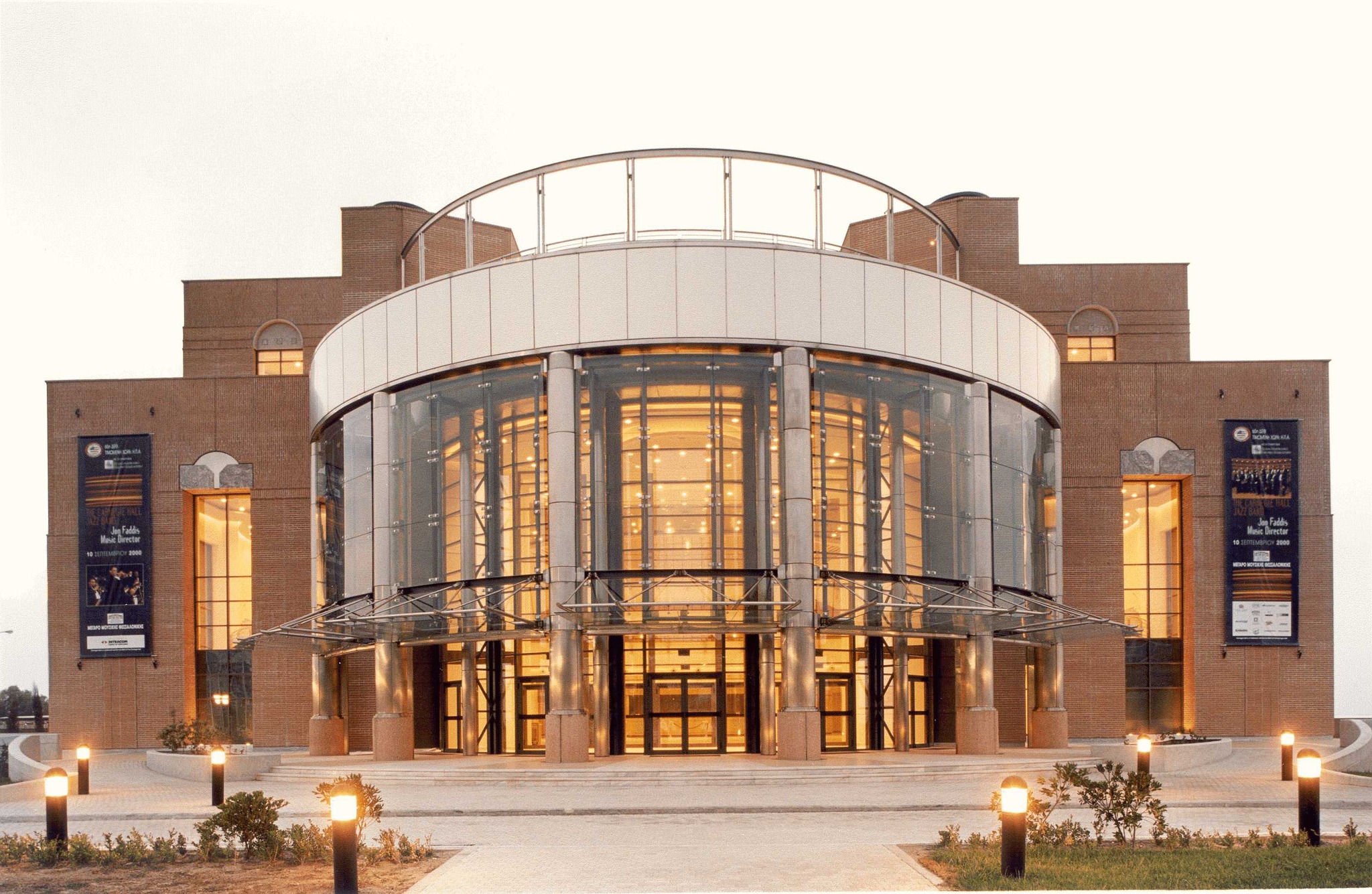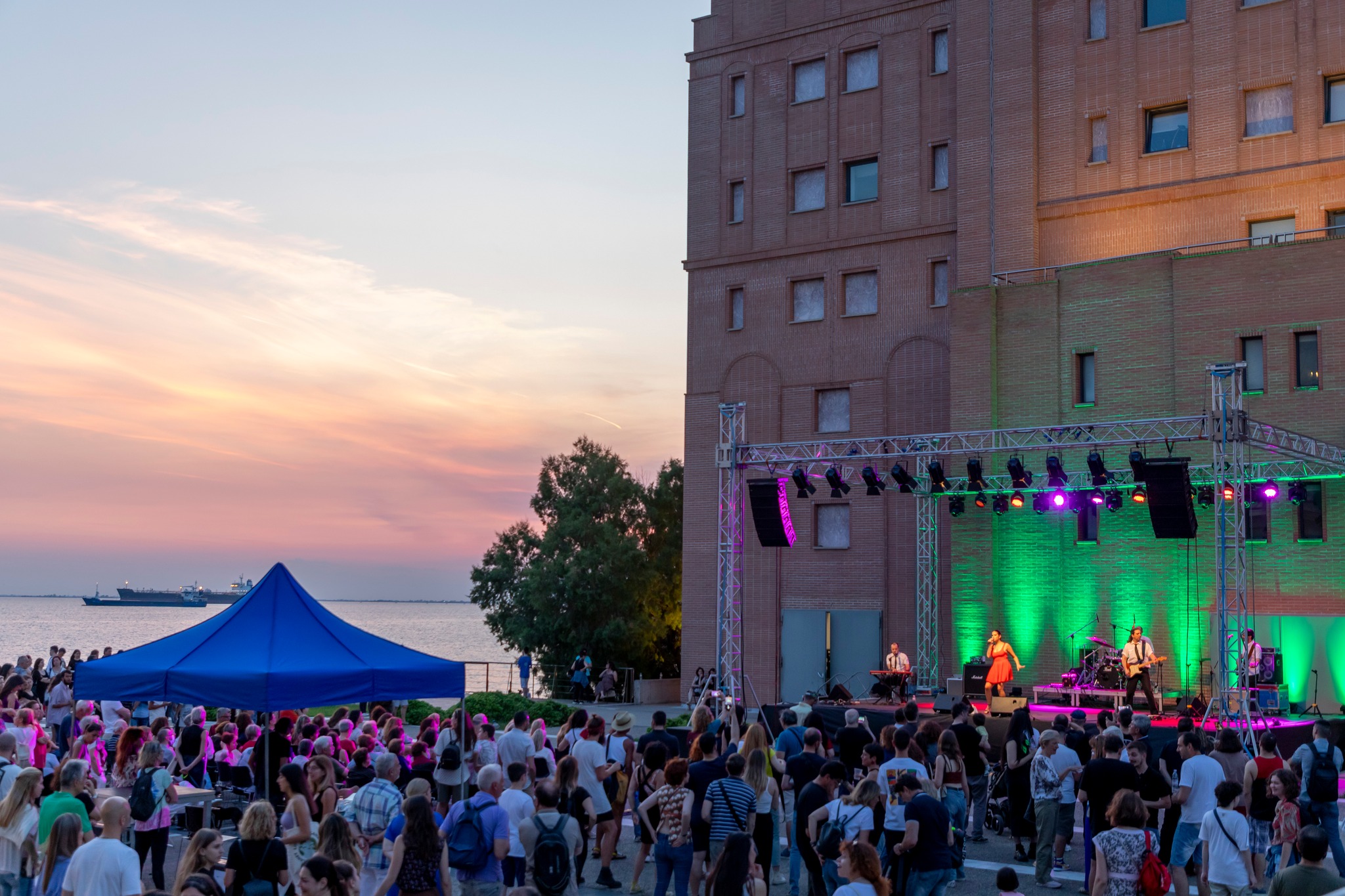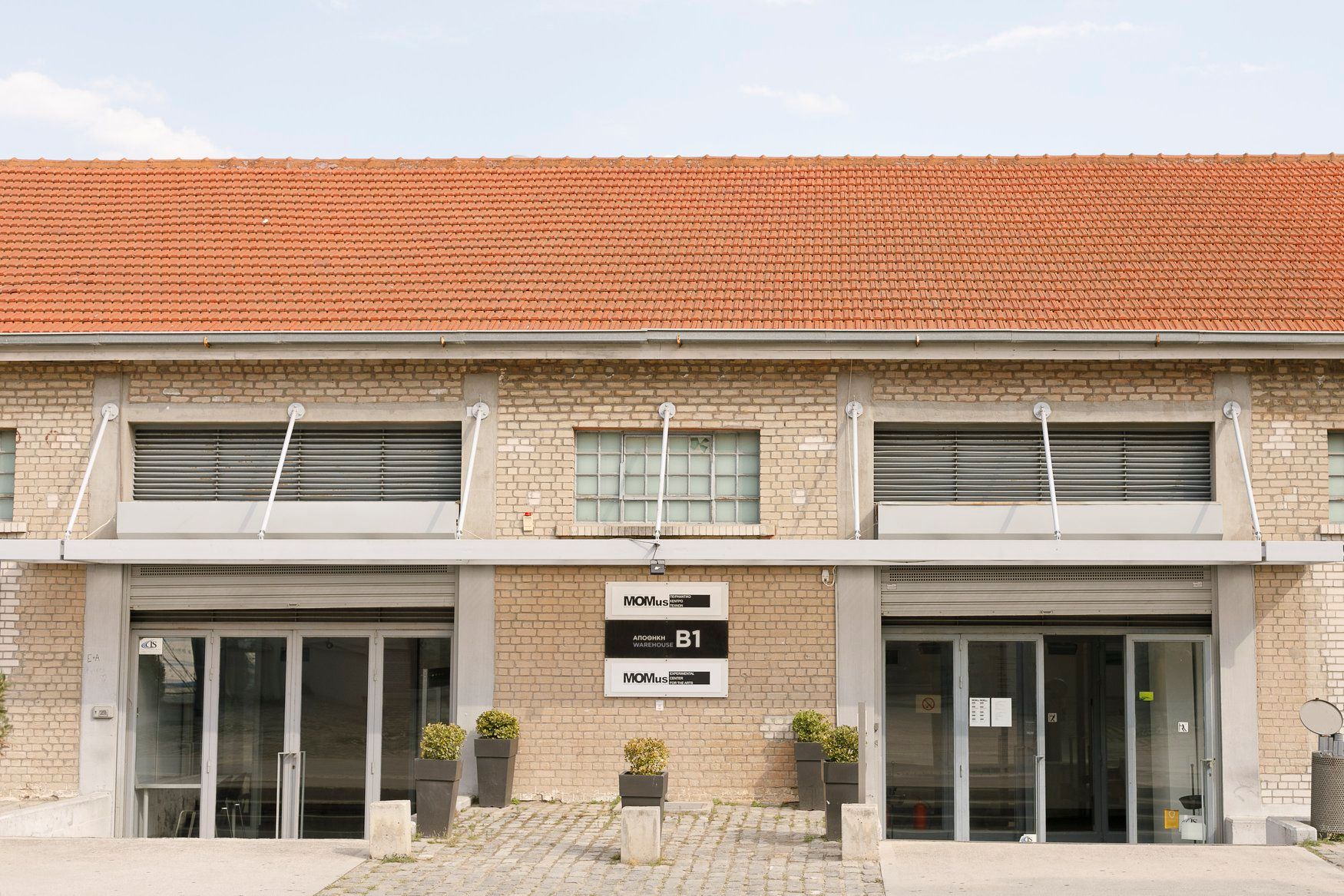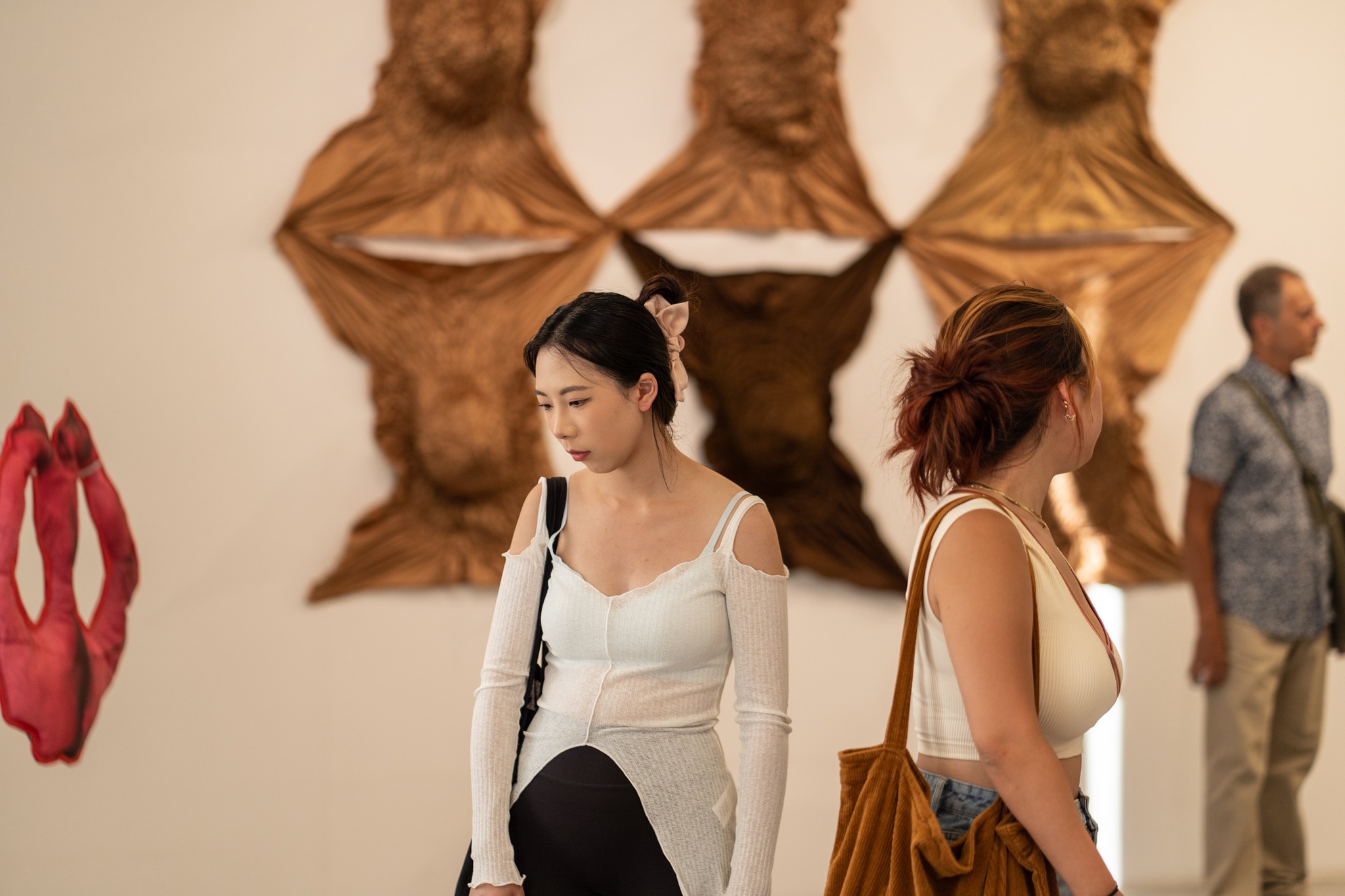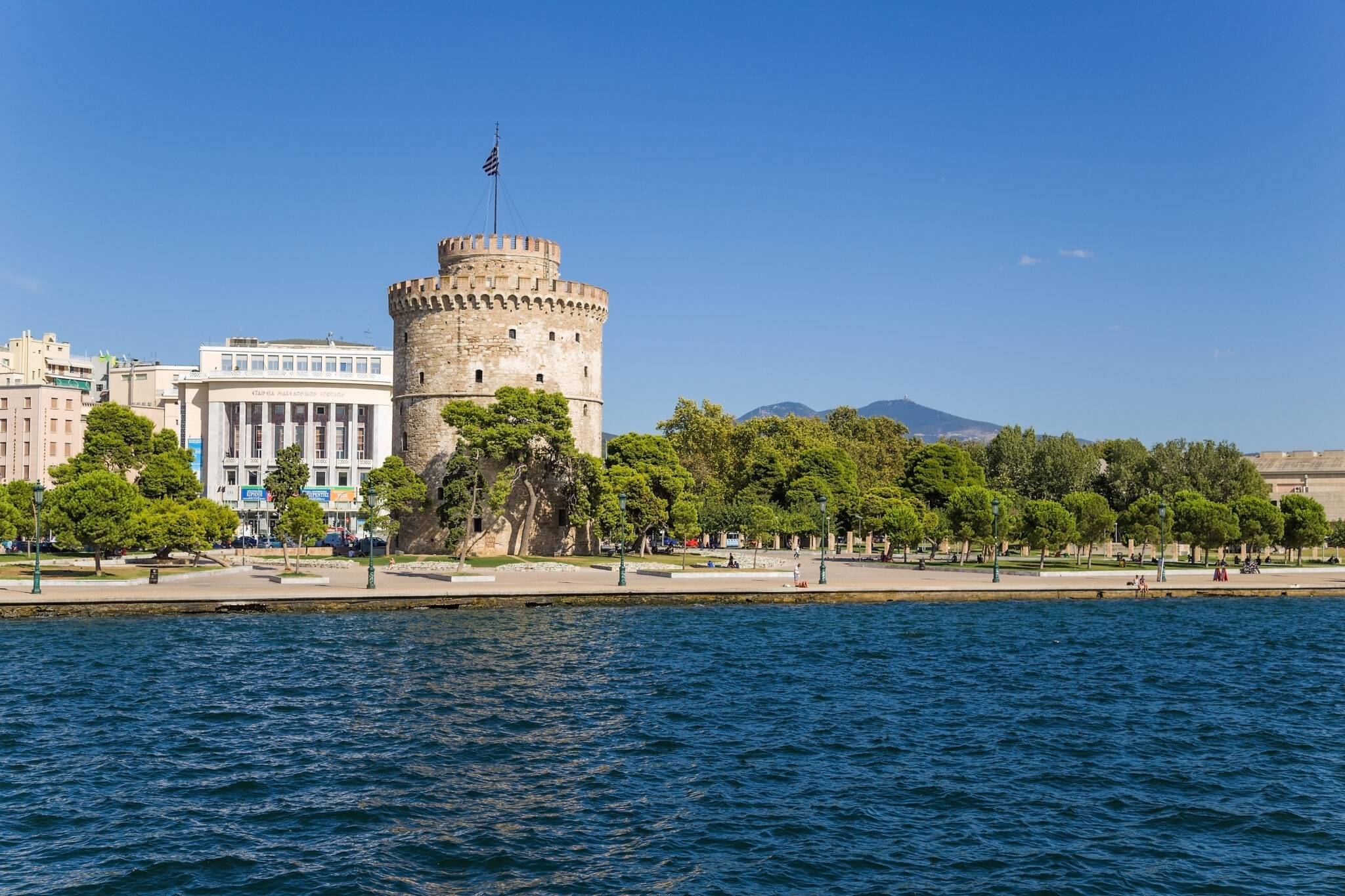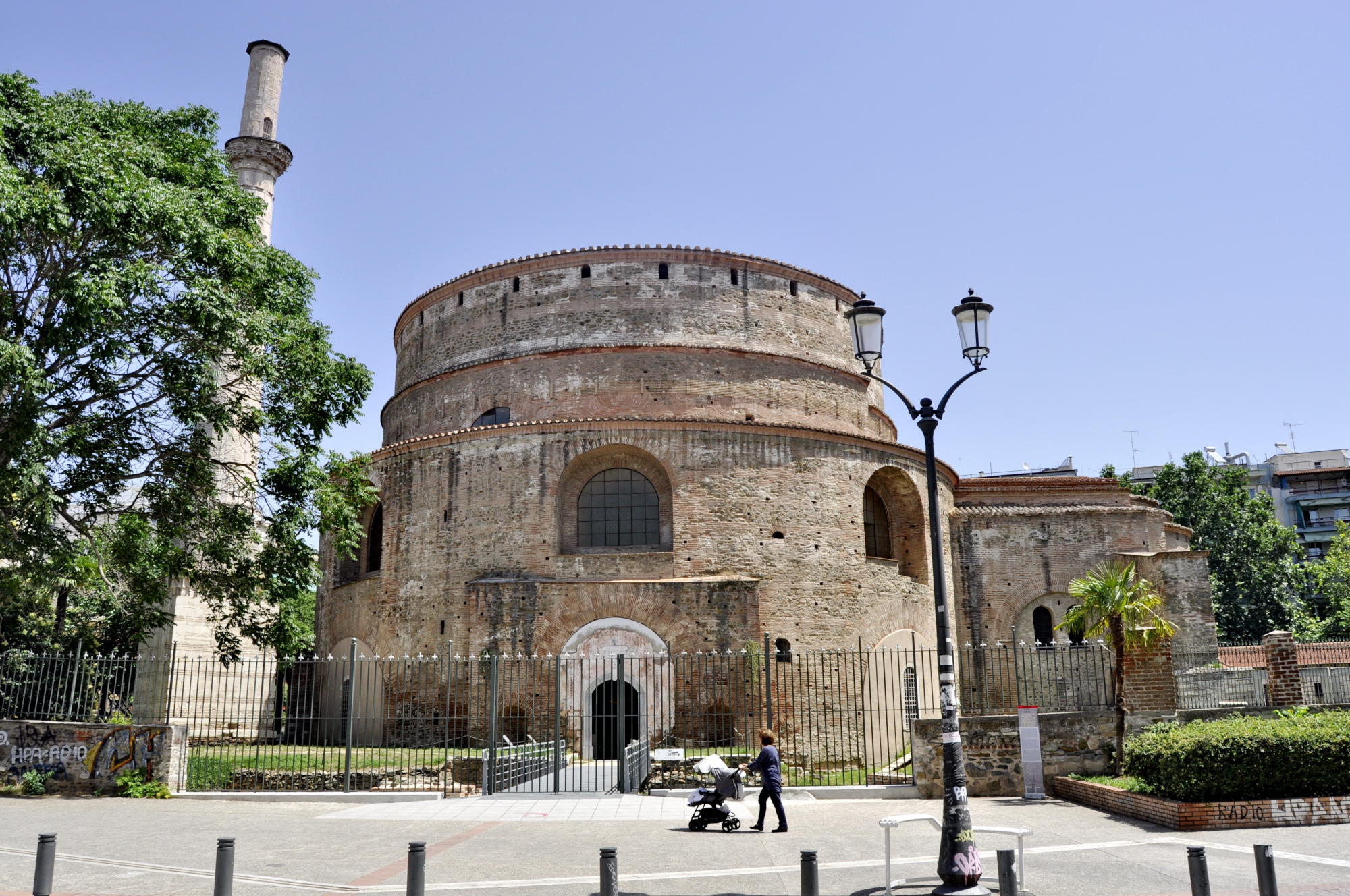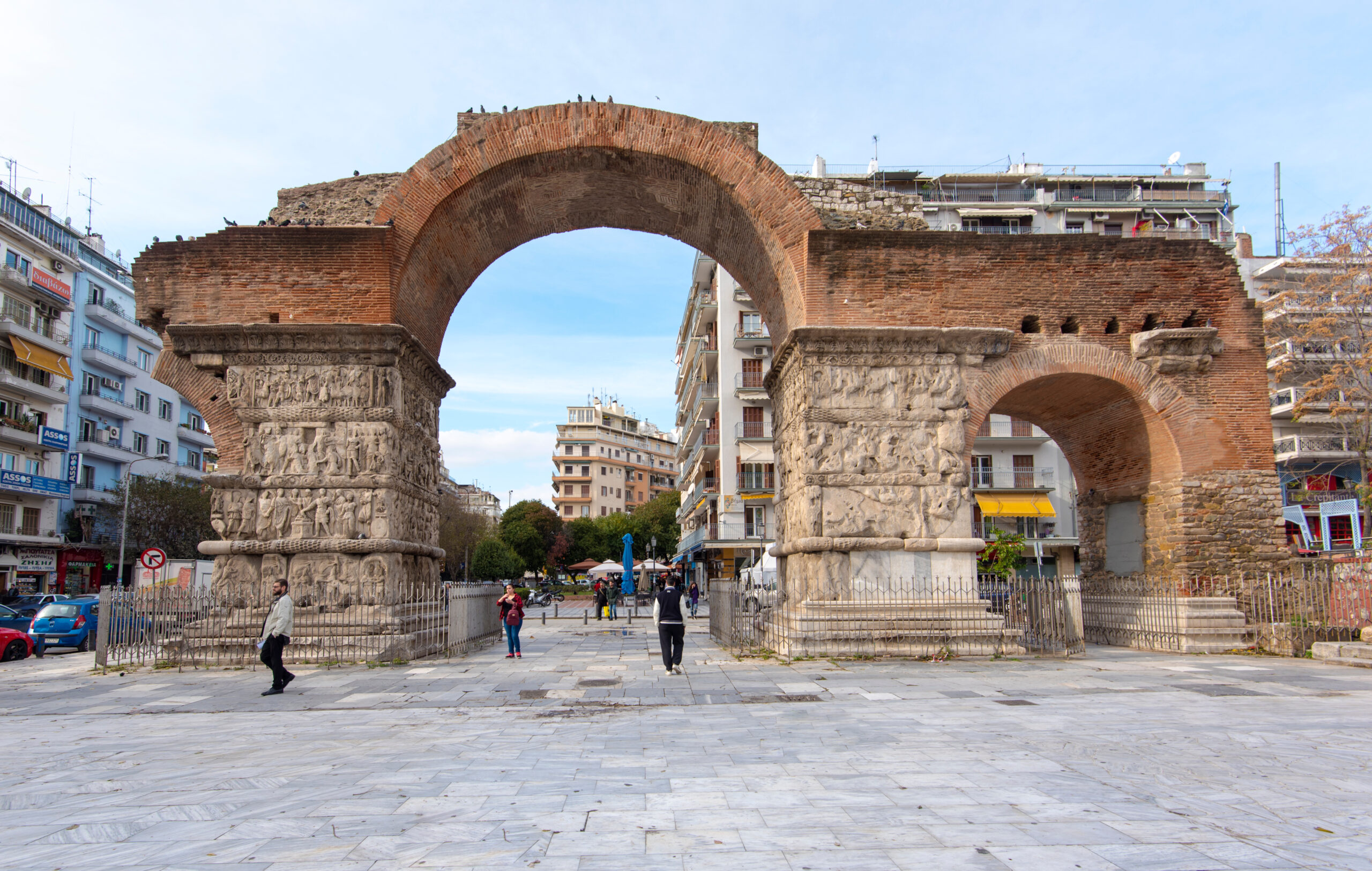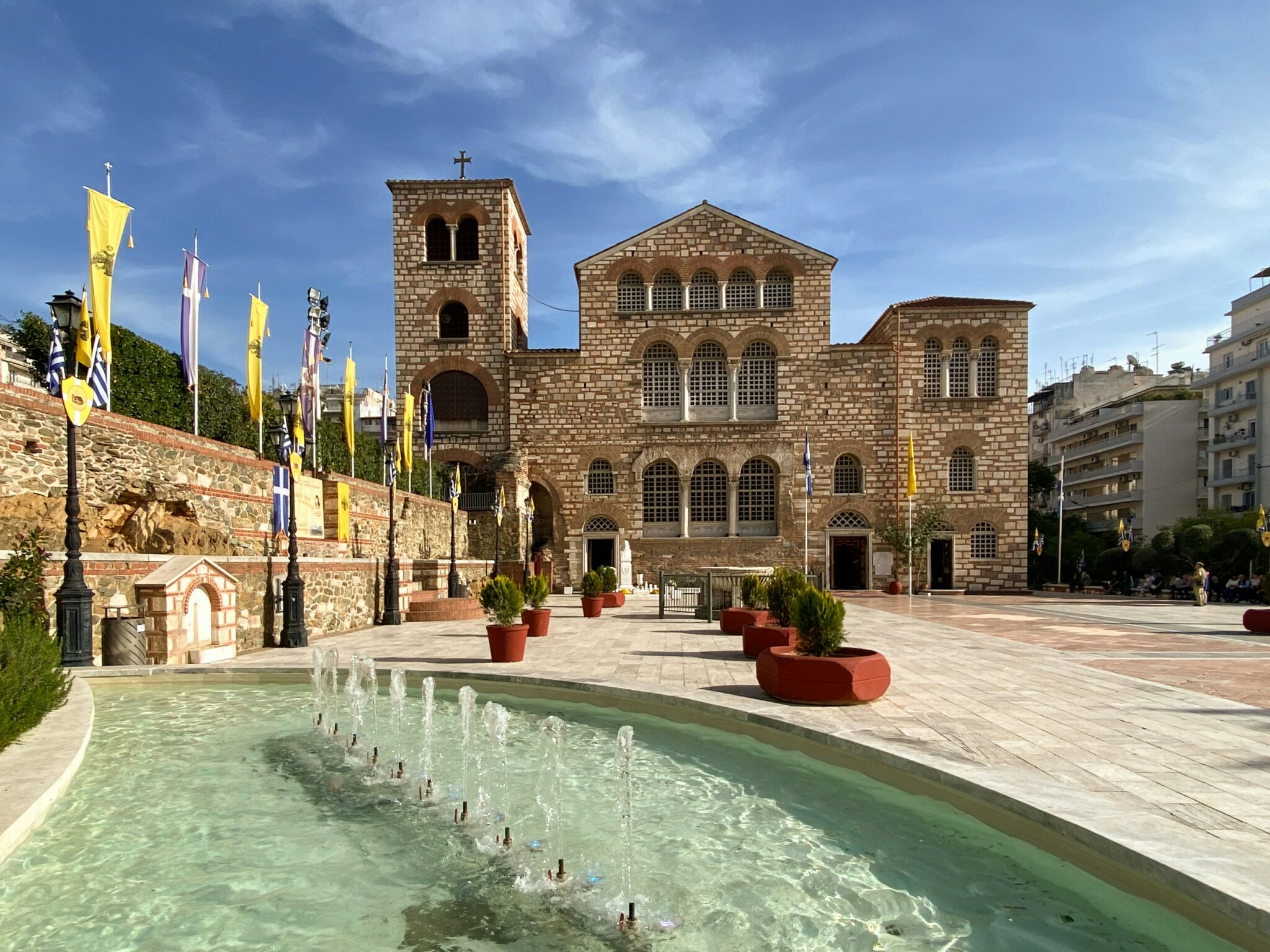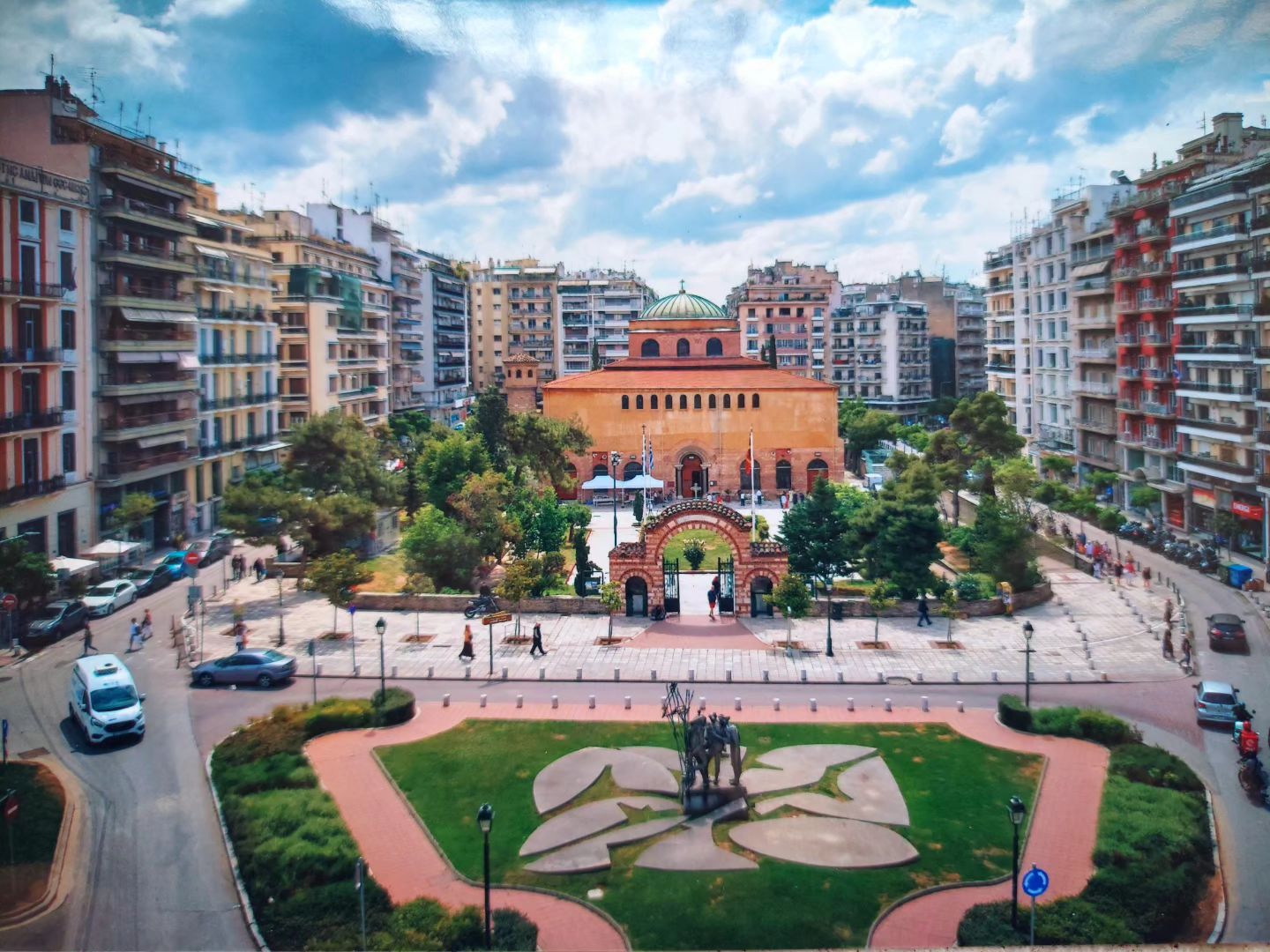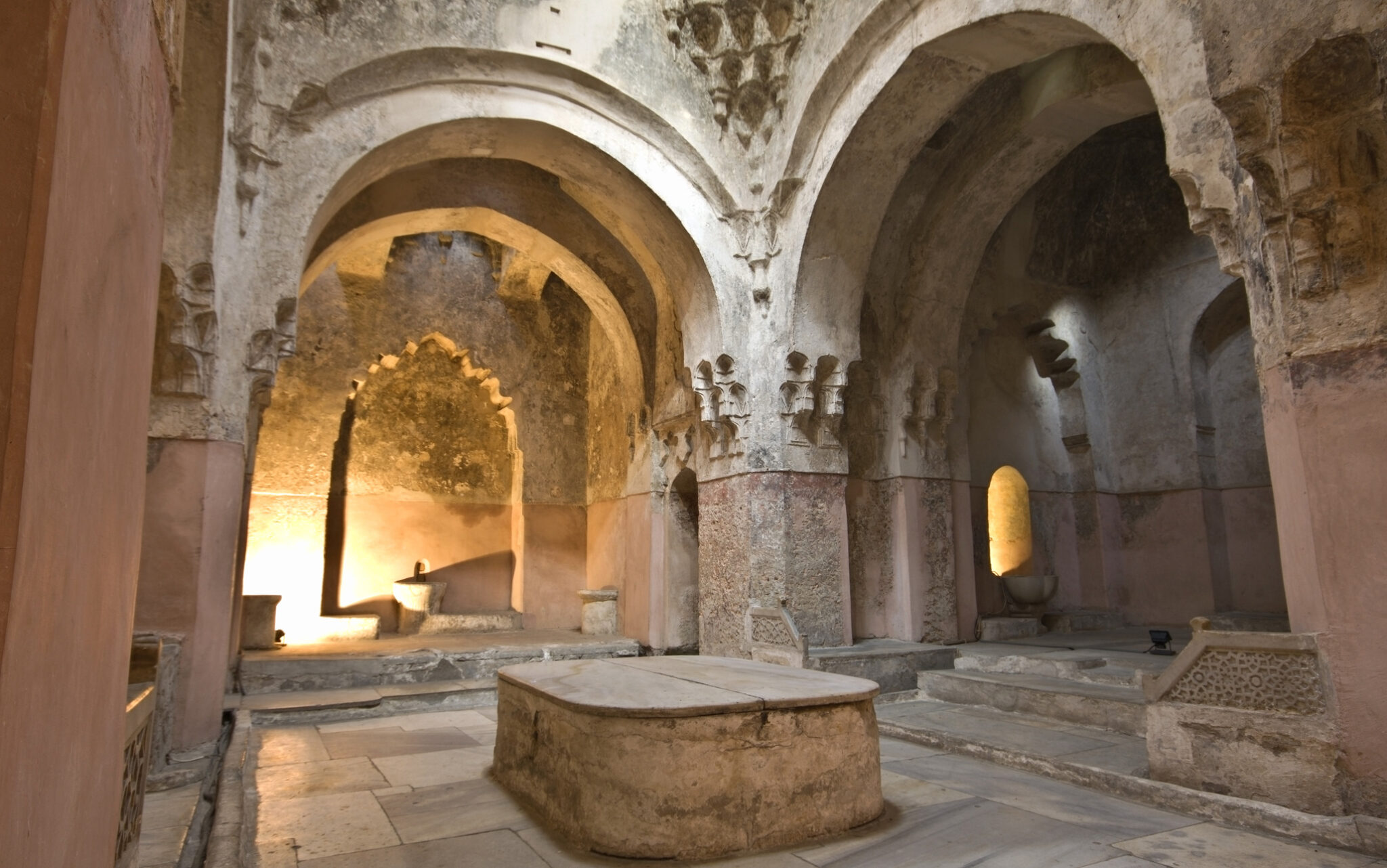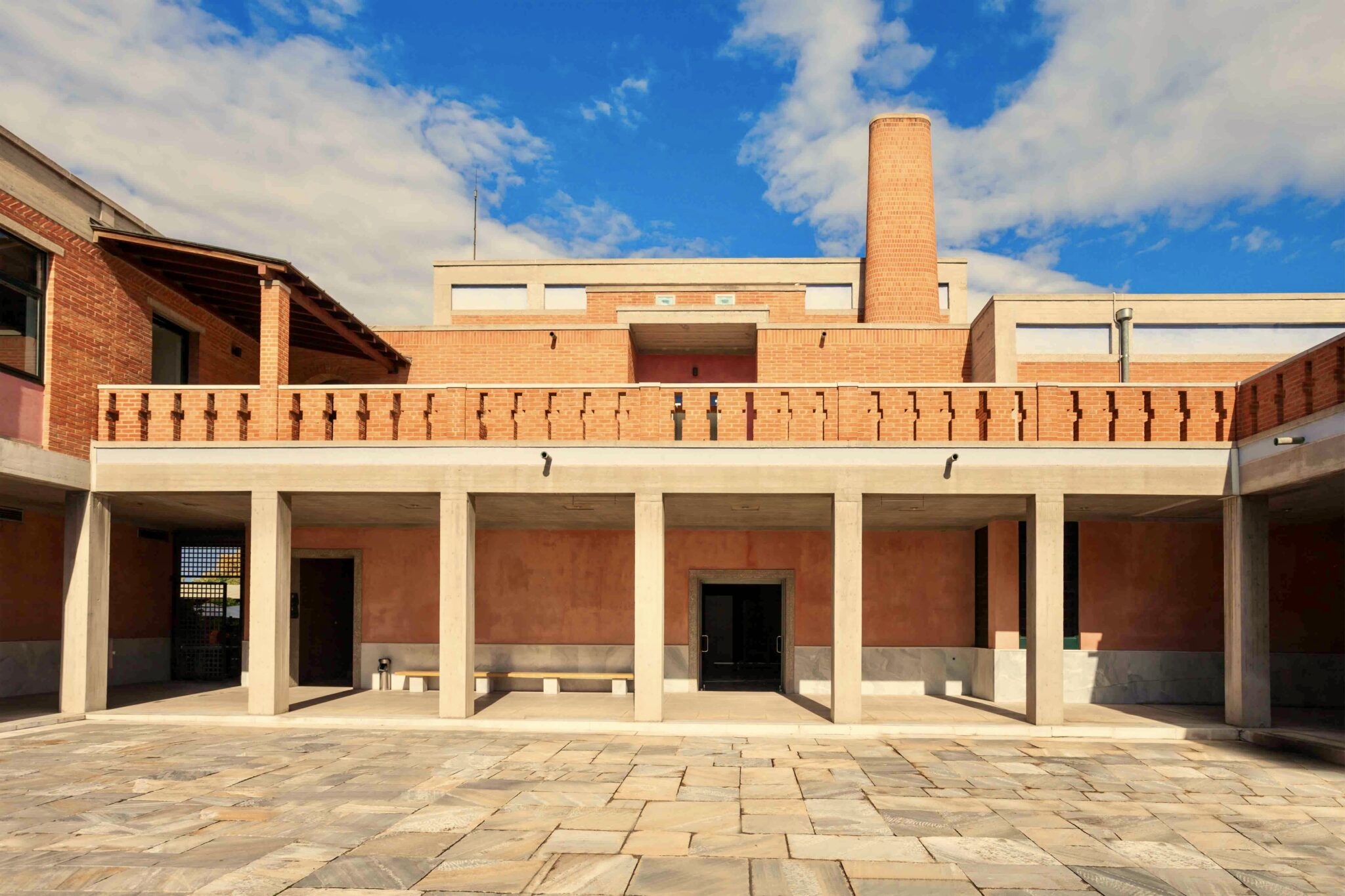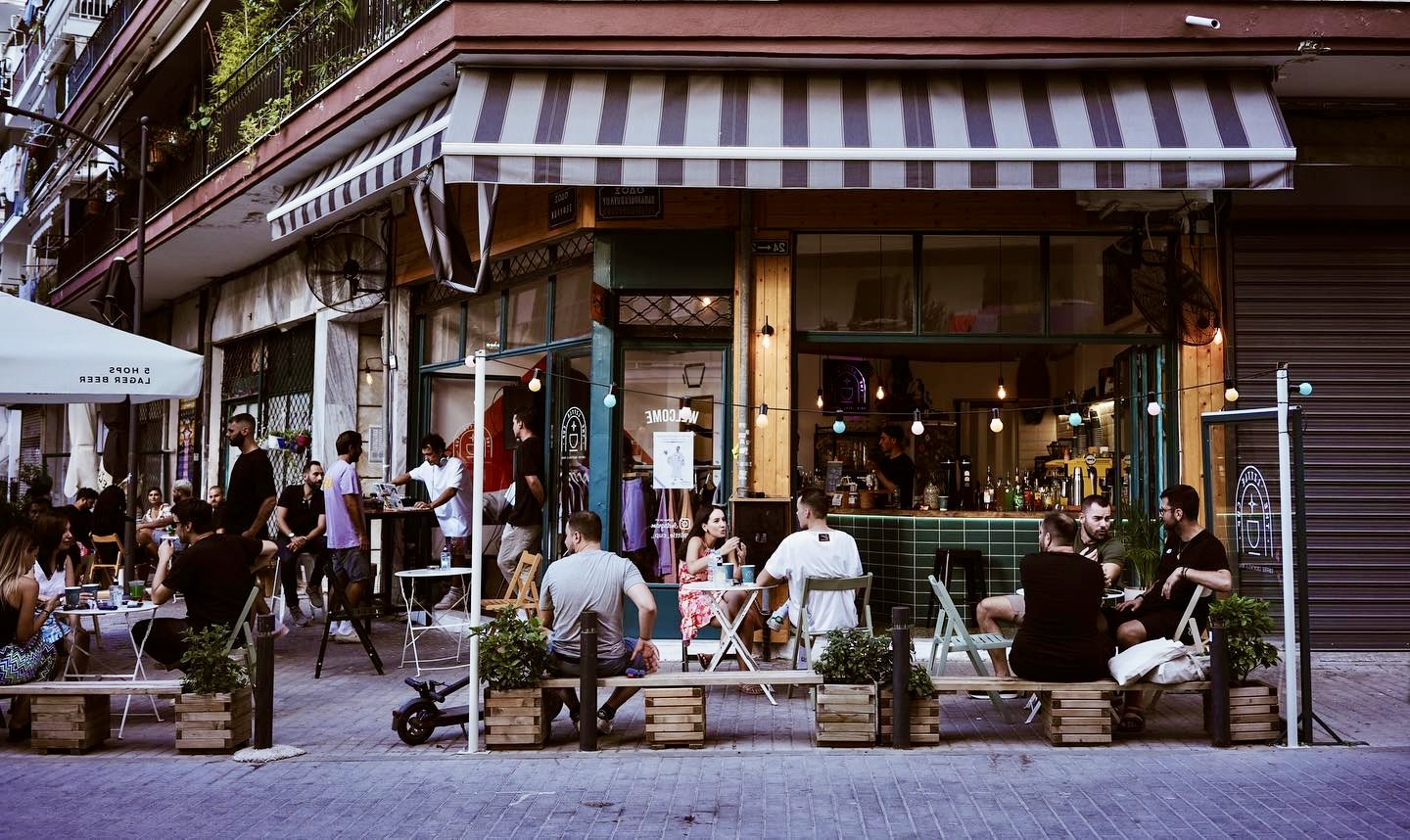Thessaloniki is a city where the past continues to reign supreme in local memory via the vestiges of Roman, Byzantine, and Ottoman legacies that remain imprinted on its walls and roads. The White Tower, once a fortress and a prison, now watches over a buzzing waterfront. The Rotunda, built for an emperor, became a church, then a mosque, and today welcomes visitors to explore the city’s past. Ottoman hammams stand quiet, their watery echoes not quite gone, and Byzantine churches hum with candlelit devotion.
And between them, new landmarks emerge – Momus, a contemporary cultural hub, and the Thessaloniki Concert Hall, a sleek venue overlooking the sea and reshaping the skyline. Here we guide you to the most unmissable landmarks and monuments in Greece’s northern capital, although there are a multitude of other sights to see there beyond these top picks. If you have the time, make sure to explore this historically layered city as far and wide as you can.
The Top 6 Modern Sights
Agora Modiano
Architect Eli Modiano designed the Agora Modiano in 1925. The market originally opened in 1930, following the devastating fire of 1917 that destroyed much of Thessaloniki, including the Jewish Quarter where the market is located. The renovation has transformed it into a vibrant food hall featuring around 75 vendors offering a variety of products, including cheeses, seafood, and meze, while maintaining its historical significance as a central market in Thessaloniki
Nea Paralia
In 2014, Thessaloniki’s waterfront promenade underwent a significant transformation, becoming known as the city’s “comeback kid.” Architects Nikiforidis-Cuomo reimagined this 3.5-kilometer stretch to include sculpted gardens, bike lanes, and art installations. The area is now popular for jogging, cycling, and leisure activities, with notable features like The Umbrellas, an installation by artist George Zongolopoulos. The picturesque views of Mount Olympus and the Thermaic Gulf enhance its appeal during sunset
OTE Tower
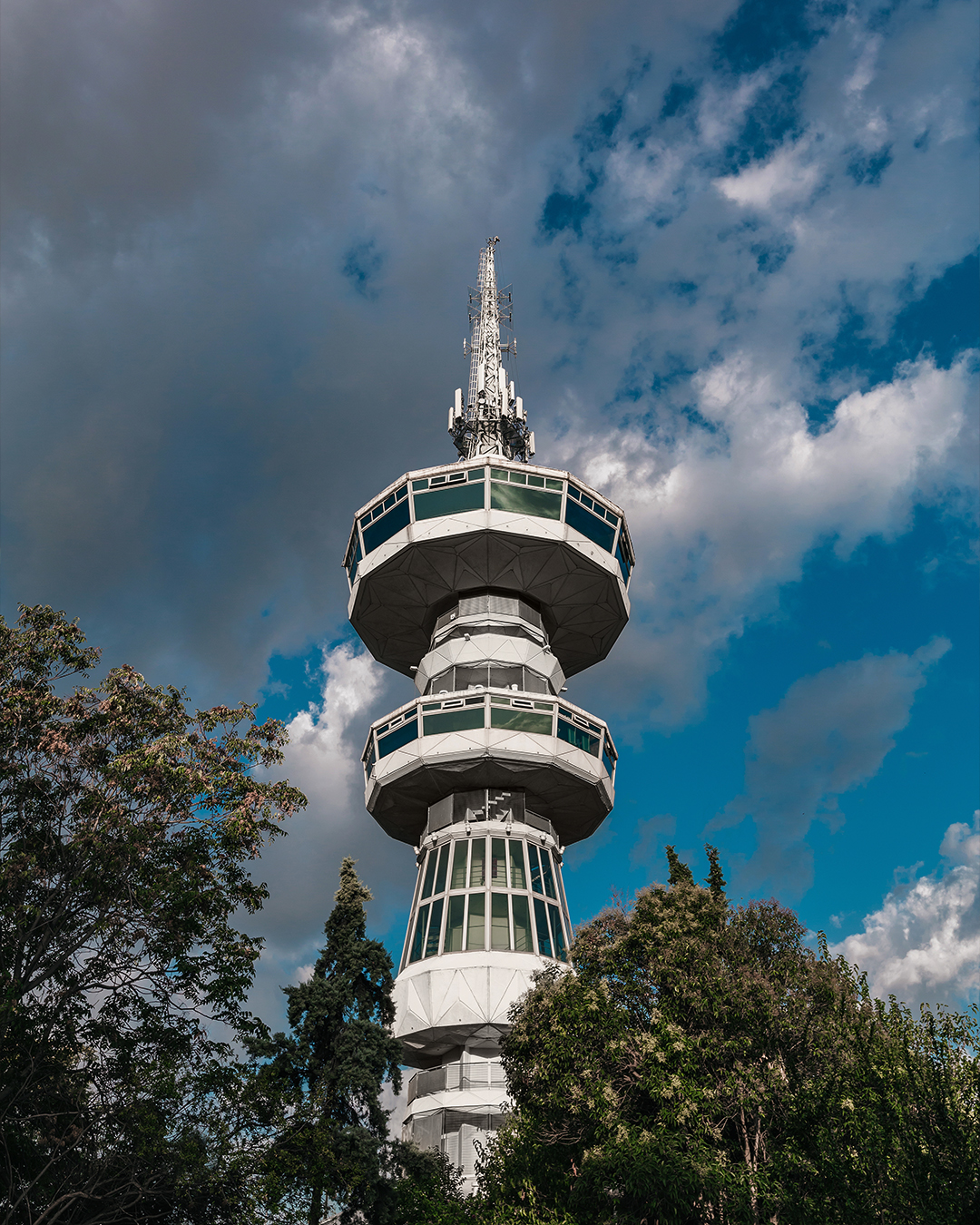

The OTE Tower, completed in 1966, stands at 76 meters tall and was designed by architect Alexandros Anastasiadis. Originally intended for broadcasting state television, it offers stunning panoramic views from its revolving Skyline Cafe Bar, allowing visitors to enjoy vistas of Thessaloniki’s diverse architecture
Thessaloniki Concert Hall
Designed by architect Arata Isozaki, the Thessaloniki Concert Hall combines modern materials like steel and glass with classical elements while integrating ancient ruins. It serves as a venue for symphonies, avant-garde theater productions, and the annual Dimitria Festival, which showcases creativity in the arts. Additionally, it hosts educational programs for school children. Find out more about the Thessaloniki Concert Hall.
MOMus
The MOMus gallery has evolved from a tobacco warehouse into a contemporary art hub showcasing works by diverse artists, including Yoko Ono and local photographers. Its exhibitions address themes such as migration and the digital age, reflecting Thessaloniki’s vibrant artistic scene
The New Holocaust Museum
Scheduled to open in 2026, this €30 million memorial will be located on the site of the old railway station and will honor Thessaloniki’s lost Sephardic community. Designed in the shape of a fractal Star of David, it will feature interactive exhibits to preserve the memory of the approximately 50,000 souls sent to Auschwitz during World War II This revised text ensures all facts are accurate and reflects recent developments regarding these landmarks in Thessaloniki.
The Top 6 Classics
White Tower
The White Tower is a prominent landmark in Thessaloniki, reflecting the city’s complex history. Built in the late 15th century, it served various roles, including as a fortress, garrison, prison, and execution site during the Ottoman period. Originally named the “Tower of Blood” due to its grim history, it was whitewashed in 1890 by a convict seeking freedom, which led to its current name. Standing at approximately 34 meters tall, it is located on the waterfront along Nikis Street and now houses a museum dedicated to Thessaloniki’s history, showcasing artifacts from Roman times to the present. Visitors can enjoy panoramic views of the Thermaic Gulf from its upper levels.
Rotunda
The Rotunda, commissioned in 306 AD by Emperor Galerius, was initially intended as part of his imperial complex, possibly serving as a mausoleum or temple. Over time, it transformed into a Byzantine church in the late 4th century, adorned with stunning mosaics, and later became an Ottoman mosque featuring the city’s last standing minaret. Its impressive structure stands 30 meters high with walls six meters thick, having endured numerous earthquakes and conflicts. Today, it is recognized as a UNESCO World Heritage site, representing Thessaloniki’s rich historical past.
Arch of Galerius
Constructed in 305 AD to commemorate Galerius’s victory over the Persians, the Arch of Galerius, also known as the Kamara, features intricate marble reliefs depicting scenes of battle and conquest. This arch served as an entrance to Galerius’s palace complex and remains a vibrant public space where students and street musicians gather. It is located at the intersection of Egnatia and Dimitriou Gounari Streets16.
Agios Dimitrios
The Church of Agios Dimitrios is Thessaloniki’s most significant religious site, dedicated to its patron saint. Built in the 7th century over earlier church ruins, it marks the site where Saint Dimitrios, a Roman officer executed for his Christian faith in the early 4th century, was martyred. The basilica has undergone several reconstructions due to fires and invasions and features early Christian mosaics and Byzantine frescoes. Under Ottoman rule, it was converted into a mosque but was restored later. Today, it is also a UNESCO World Heritage site and remains central to religious life in Thessaloniki.
Agia Sofia
Dating back to the 8th century, the Church of Agia Sofia is one of Thessaloniki’s key Byzantine monuments, influenced by Constantinople’s Hagia Sophia. Built over an earlier basilica, it played an essential role during the Iconoclasm period. Its grand dome showcases intricate mosaics representing Byzantine artistry. During Ottoman rule, it was converted into a mosque; however, many Christian elements remained intact. Now recognized as a UNESCO-listed site, Agia Sofia symbolizes the city’s evolving spiritual and historical landscape.
Bey Hammam
Constructed in 1444 by Sultan Murad II after the Ottoman conquest of Thessaloniki, Bey Hammam was the city’s first public bathhouse. Strategically located near Agia Sofia, it served both purification and social purposes for the Muslim community. Unlike simpler hammams of its time, this facility featured separate sections for men and women. The bathhouse operated for centuries before closing in the mid-20th century. Today, its well-preserved architecture stands as an important remnant of Thessaloniki’s Ottoman heritage.



